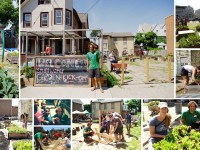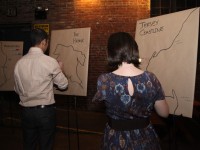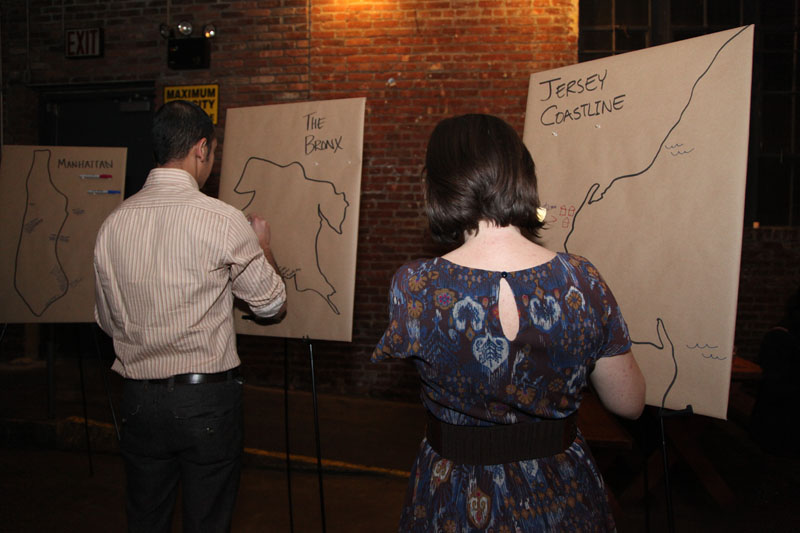Resilience. It’s a word many sectors use to mean many things. Because Anne Marie Healy and Andrew Zolli have already contributed a lengthy assessment of the term and its many uses in their eponymous tome released last July, we won’t repeat it here.
Superstorm Sandy augmented the use of the word, contextualizing it in city response to disasters like Sandy, Hurricane Katrina, even September 11th.
Turning to the smartest people we know, we found a remarkable body of thought that blends resilience definitions from the fields of ecosystem, biological, climate, social, and behavioral sciences. The thrust seems to be an assertion that, with smarter planning focused on resilience, our cities will be better able to return to an earlier state after a disaster, and, when that is not possible, reimagine themselves into a better future (like we’ve seen with Detroit Future City).
However, there is one important point that can’t be addressed even by the most careful city planner, municipal agency, or local government. No amount of planning can build the critical social aspects of resilience without involvement and participation by citizens.
If a city wants civil society to be part of a more resilient urban environment, we feel it must take a close look the social cohesion of its neighborhoods. Myriad indices and analytical tools (like Knight Foundation’s Soul of the Community, Tale of Two Cities) are available to help cities assess social fabric.
But, there are few mechanisms by which city planners or urban designers might affect such social indicators in the same way that they might address infrastructure changes. Cities may try to catalyze citizen participation through programs like matsuri and others shared by Daniel Aldrich at Purdue. But there is a vast conceptual and practical gulf between being able to support neighborhood resilience by, say, increasing community participation at a block party and being able to support infrastructure resilience by, say, increasing the height of a sea wall.
Further research is certainly needed to better understand how the various systems in an urban environment—the complex interconnectedness of built infrastructure, natural systems (including ecology, geology, climate, etc), and social systems (including cultural, economic, governance, etc)—can produce a more resilient city and better prepare cities for disasters in different ways. But decades of work in fields as diverse as neighborhood development and social justice advocacy will make one thing clear: we’re not going to design or plan our way to the social side of resilience.
Building neighborhood resilience requires grassroots effort, patient capital and patience. Opportunities for participation must build on local successes, and local successes must build on more opportunities, over time.
ioby supports citizen-led, neighbor-funded projects that make stronger, more sustainable neighborhoods. The platform provides relevant training and resource sharing to support these projects (and with future developments, we plan to bolster and reinforce this). But more importantly, the platform organizes residents to support local projects with donations and volunteer effort.
In April, the National League of Cities released “Bright Spots in Community Engagement” noting that an important step that separates an attached citizenry from an engaged citizenry is opportunities for participation in shaping the future of one’s own city and the feeling that one’s own actions can make a difference.
Small actions—donating $40 or volunteering on a weekend—are opportunities for participation with a relatively low barrier to entry. In addition, because ioby projects tend to be small scale or short term, a participant is likely to see the positive impact of her own contribution fairly quickly. We believe these small actions and easy opportunities for participation can be a gateway drug for civic engagement. This is why we believe local participation is a key element, if not a backbone, of any definition of resilience that accounts for social systems.
ioby tracks a variety of baseline data and key performance metrics related to the neighborhood impacts of all of the projects that use our platform, including some basic information about the donors and volunteers that support this work. We have clear demand for our services, and a strong and growing base of supporters who want to become more involved across the country. But there remain some very important questions about the effects of this type of work on neighborhood cohesion, and further, about the effects of this scale of work on a city’s ability to respond to emergencies of any kind.
Because of the nature of our work with active and involved citizens, ioby has tremendous potential to contribute meaningful data to these questions. We would like to expand our data collection and tracking to include a variety of possible key indicators of resilience at the neighborhood scale, including the following. But we’re going to need your help making our data useful to others in this emerging field, and we’re going to need support to make it robust. Please join us along the way.
Key Performance Indicators of Neighborhood Resilience
After participating in a neighborhood project, do ioby users (especially donors and volunteers):
- know the names of more of their neighbors?
- recognize more of their neighbors faces?
- participate in more/other local civic opportunities?
- feel more comfortable leading change in their areas?
- feel capable of making change in their neighborhood?
- feel more confident in citizens’ ability to improve the neighborhood?
- feel like they can play an important role in their community?
- feel more able to shape the future of their community?
- feel more responsibility to shape the future of their community?
- feel more comfortable turning to neighbors for help?
- feel the neighborhood was able to band together to respond to a challenge?




